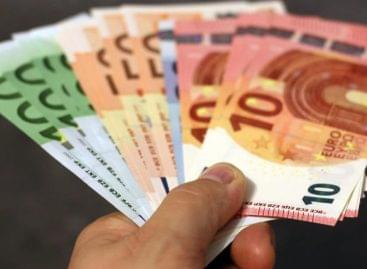The increase in the price not only of food, but also of raw materials was much higher than in other EU countries
Inflation broke decade-long records in most European countries last year, a substantial part of which was caused by the increase in the price of food. And food inflation can largely be attributed to the increase in the price of agricultural raw materials and the increase in costs for farmers, according to recent data from Eurostat. Hungary is an absolute record holder, not only in food prices, but also in raw materials.

According to the summary of the EU statistical office, there were three main reasons for the skyrocketing prices:
Russo-Ukraine War: The conflict has caused panic in global markets, as Russia and Ukraine are major exporters of cereals, corn, sunflowers and fertilizers, the world’s largest emitters.
Drought: Europe was hit by unprecedented drought and heat in the summer of 2022, which damaged field crops and had a substantial impact on livestock farmers, especially milk production, due to burnt pastures.
Inflation: an unprecedented increase in the cost of living for farmers. The increase in input costs was influenced by the rise in energy prices and the shortage of fertilizers. In addition to the dependence on Russian fossil energy sources, the shortage caused by the import restrictions of Russian fertilizer, also affected by sanctions, drove up the prices.
The increase in costs was influenced to a lesser extent by the increase in labor costs and the aftereffects of the Covid-19 epidemic, as well as the decreasing demand for some products – according to Eurostat, napi.hu points out.
További információ erről: Európa legtöbb országában évtizedes rekordokat döntött az infláció tavaly, amelynek tetemes részét az élelmiszerek drágulása adta. Az élelmiszerinfláció pedig nagy részben a mezőgazdasági alapanyagok drágulásának és a gazdák költségnövekedésének tudható be – derül ki az Eurostat friss adataiból. Magyarország abszolút rekorer, de nem csak élemiszerárban, hanem alapanyagban is. Az uniós statisztikai hivatal összegzése szerint három fő oka volt az elszálló áraknak: Orosz-ukrán háború: a konfliktus miatt eluralkodott a pánik a globális piacokon, mivel Oroszország és Ukrajna a gabonafélék, a kukorica, a napraforgó és a műtrágya jelentős exportőr országai, a világ legnagyobb kibocsátói. Aszály: Európát példátlan aszály és forróság sújtotta 2022 nyarán, amely kárt tett a szántóföldi növényekben, és a kiégett legelők miatt érdemi hatással volt az állattartókra, elsősorban a tejtermelésre. Infláció: a gazdák önköltségének példátlan emelkedése. Az inputköltségek növekedésére hatással volt az energiaárak emelkedése, valamint a műtrágyahiány. Az orosz fosszilis energiaforrásoktól való függés mellett felhajtotta az árakat a szintén szankciók sújtotta orosz műtrágya importkorlátozása miatt kialakult hiány. A költségek emelkedését kisebb részben befolyásolta a munkaerő-költség növekedése, és a Covid-19-járvány utóhatásai, valamint egyes termékeknél a csökkenő kereslet – mutat rá az Eurostat nyomán a napi.hu.
Koronavírus okozta betegség (COVID-19)
A legfrissebb információk megtekintése
Related news
The government provides irrigation water to farmers for free
The government provides irrigation water to farmers for free by…
Read more >Inflation in Italy accelerated to 1.7 percent in June
In Italy, consumer prices rose by 1.7 percent year-on-year in…
Read more >There could be a serious problem with one of the important cornerstones of food production
Fertilizer is one of the most important pillars of modern…
Read more >Related news
GKI analysis: Why do Hungarian households live more poorly than anyone else in the EU?
Imagine that the residents of every EU country shop in…
Read more >KSH: industrial producer prices decreased by 0.7 percent in May 2025 compared to the previous month, and increased by an average of 6.9 percent compared to a year earlier
In May 2025, industrial producer prices were 6.9 percent higher…
Read more >Consumption drives the economy
According to the latest forecast by the Balance Institute, the…
Read more >






